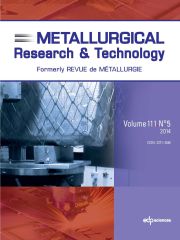Article contents
The anatomy of capital stock : input-output material flow analysis (MFA) of the material composition of physical stocks and its evolution over time
Published online by Cambridge University Press: 26 September 2012
Abstract
The operation of an economy is supported by the stock of materials in the form of durables and infrastructure such as machinery, equipment, buildings, and structures. The amount of durables and infrastructure or “capital stock” in the economy is of great interest in the literature of economics, and is usually measured in monetary terms based on the data on capital expenditure. In spite of its wide use by economists, this measure of “capital stock” is of very limited use for sustainable management of material stock because of its neglect of physical properties such as the mass and material composition. This paper proposes a new method of measuring the stock of long-lived durables and infrastructure in terms of the mass of its materials. This method is based on the WIO-MFA method [S. Nakamura et al. J. Ind. Ecol. 11 (2007) 50-63] and the capital formation matrix that is one of the supplementary tables of the input-output table. The method is applied to the Japanese input-output data with 400 sectors, with 9 types of metals (iron, ferroalloy, copper, zinc, lead, tin, aluminum, silver, and gold) and 8 types of plastics (thermo-setting resins, PE (low), PE (high), PS, PP, PVC, high-performance resins, and other resins) occurring as materials. It was found that substantial variations exist among sectors while fixed capital formation in the year 2000 weighs 518 kg per million Japanese yen on average in metals and plastics.
Keywords
- Type
- Research Article
- Information
- Metallurgical Research & Technology , Volume 109 , Issue 5: Social Value of Materials , 2012 , pp. 293 - 298
- Copyright
- © EDP Sciences 2012
References
- 5
- Cited by


